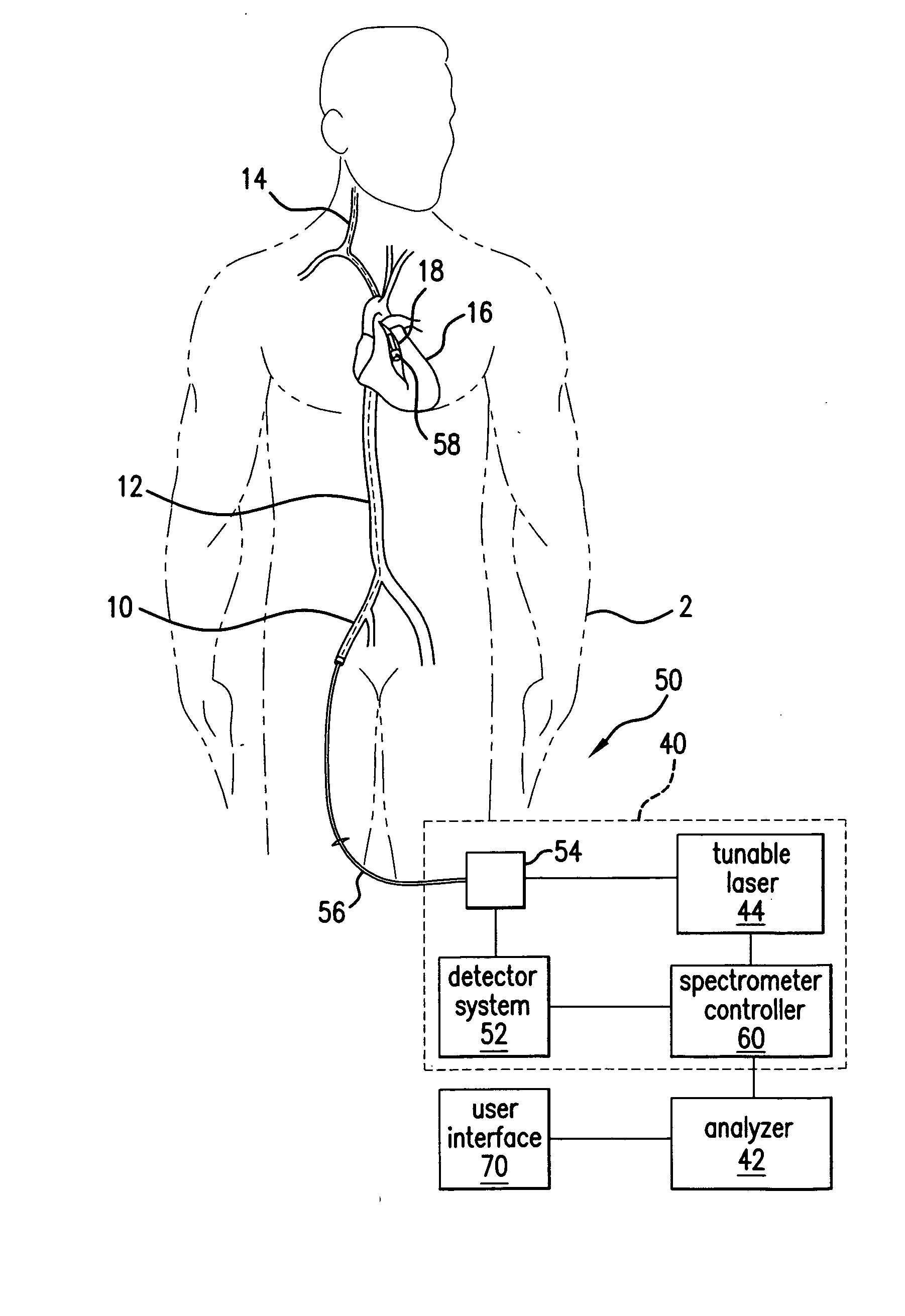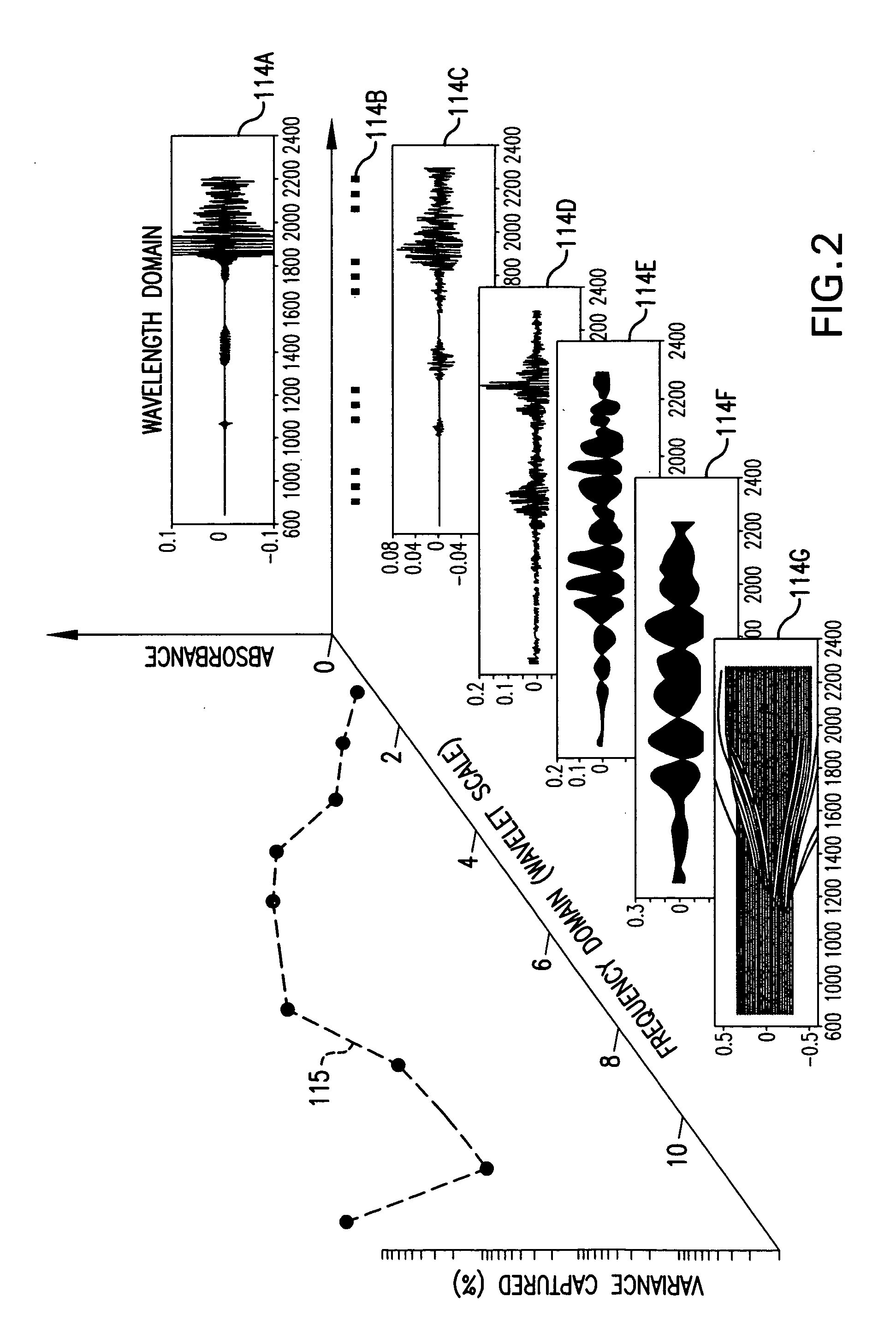Method and system for dual domain discrimination of vulnerable plaque
a dual-domain, vulnerable plaque technology, applied in the field of dual-domain discrimination of vulnerable plaques, can solve the problems of degrading and even corrupting the discriminant analysis, and achieve the effect of more robustness, sensitivity and specificity
- Summary
- Abstract
- Description
- Claims
- Application Information
AI Technical Summary
Benefits of technology
Problems solved by technology
Method used
Image
Examples
Embodiment Construction
[0037]FIG. 1 illustrates the partitioning of spectral data that were acquired from a blood vessel.
[0038] Specifically, a set of near infrared (NIR) spectra are shown in the graph inset 116. In the current embodiment, these spectra were collected from a region, or regions, of interest on the interior of a patient's blood vessel, such as the coronary artery. Specifically, the plot shows mean-centered absorbance as a function of wavelength in nanometers (nm) covering a scan band of 600 to 2300 nm. In some implementations, the scan band is represented in time corresponding to the capture or resolving device's time to scan over the band of interest to collect each spectrum.
[0039] The spectra exhibit a large degree of variability between individual scans. Some of this variability is due to signals from the regions of interest. However, most of variability is due to the combined effects of noise sources in the time and frequency domains.
PUM
 Login to View More
Login to View More Abstract
Description
Claims
Application Information
 Login to View More
Login to View More - R&D
- Intellectual Property
- Life Sciences
- Materials
- Tech Scout
- Unparalleled Data Quality
- Higher Quality Content
- 60% Fewer Hallucinations
Browse by: Latest US Patents, China's latest patents, Technical Efficacy Thesaurus, Application Domain, Technology Topic, Popular Technical Reports.
© 2025 PatSnap. All rights reserved.Legal|Privacy policy|Modern Slavery Act Transparency Statement|Sitemap|About US| Contact US: help@patsnap.com



